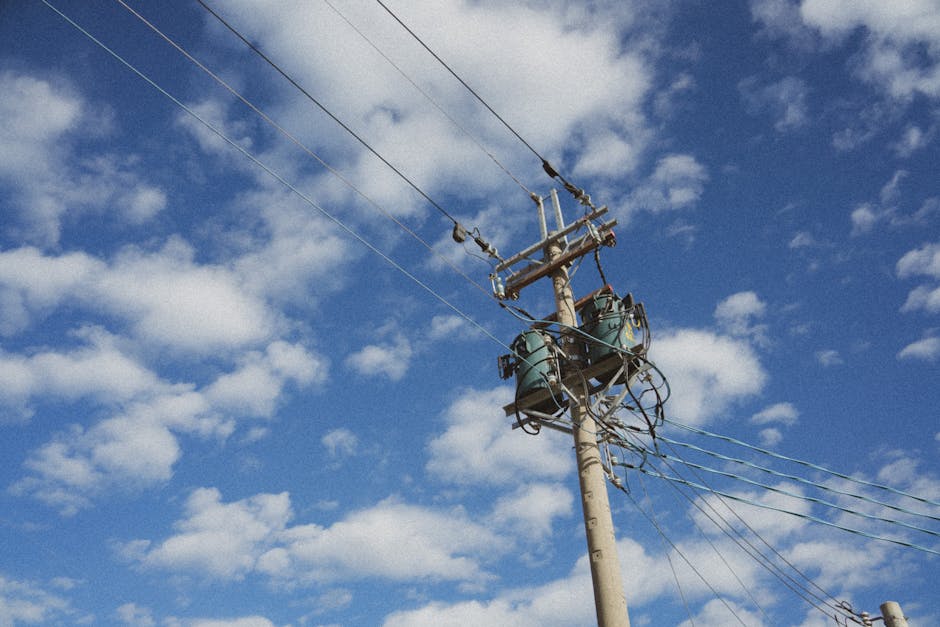Greening Your Digital Footprint: Tackle Eco-Impacts of Cloud Use!
In a world where every click, swipe, and download feels virtually harmless, the truth is striking: our digital habits leave a hidden trail of carbon emissions. Many of us may not realize that the very cloud services we rely on for work, education, and entertainment substantially impact the environment. Curious about the hidden environmental impact behind cloud computing? This article dives deep into understanding your digital consumption and offers actionable eco-friendly tips for a greener digital footprint.
The Cloud: Not Just a Haven for Data

When we think of "the cloud," we often conjure images of endless storage space and seamless connectivity. However, behind that user-friendly interface lies a network of data centers—vast facilities filled with servers that consume staggering amounts of energy. These centers operate 24/7, requiring cooling systems and other resources that contribute to their environmental footprint. According to a 2020 study by the International Energy Agency, data centers accounted for about 1% of the global electricity demand, a figure expected to rise as our digital lifestyles continue to expand.
To grasp the impact of cloud computing, let's consider everyday activities: streaming your favorite series, uploading photos, or even sending emails. While these tasks feel lightweight, each action contributes to a larger environmental burden. The less we waste, the more we embrace a sustainable digital lifestyle.
This leads to the question: how can we engage with technology responsibly? Here are some tips you can adopt today to reduce your digital carbon footprint further.
Understanding Your Digital Carbon Footprint

Your digital footprint encapsulates all online activities, from web browsing to cloud storage usage. Understanding its scope is critical because often, we become complacent, thinking our individual actions don’t matter. Yet, every digital action can be tracked, quantified, and even optimized for sustainability.
Tools for Measuring Carbon Footprint: Several online tools can help you calculate your digital carbon impact. The Green Web Foundation offers calculators that measure the carbon output based on your website's hosting and activity. Also, services like EcoPing not only measure speed and uptime but also provide insights into the sustainability of different hosting services.
Shifting focus from merely browsing to mindful interaction will yield better results. Opt to favor eco-friendly web hosting services, which are powered by renewable energy sources. Making even small adjustments can accumulate into larger impacts.
Eco-Friendly Tips for Sustainable Cloud Usage

With the awareness of how digital habits can affect the environment, it’s time to explore practical tips for greening your digital lifestyle.
1. Embrace Digital Minimalism

Digital decluttering isn’t just about tidying up your files; it’s a conscious choice to minimize unnecessary data storage. Consider adopting a digital minimalism approach by:
- Reducing the number of apps you use.
- Regularly deleting unnecessary emails (remember, every email stored contributes to server demand).
- Avoiding duplicate files stored across multiple platforms.
The more efficient your digital space, the less storage is needed, leading to lower energy consumption.
2. Optimize Your Cloud Storage

Maximize your cloud storage by arranging files effectively. While abundant storage services can feel tempting, keeping redundancy may waste unnecessary server energy. Make it a habit to transfer files from high-energy to low-energy storage solutions whenever possible. Using AI tools can streamline this process, ensuring only the essential files are actively stored.
3. Choose Eco-Friendly Streaming Options

Next time you binge-watch your favorite streaming series, consider applying a mindful approach. Streaming in higher definition requires more bandwidth, which translates to additional energy usage in data centers. Opt for standard definition when possible or download content to view offline if you won’t have consistent internet access. This shift alone can significantly reduce the carbon footprint in your viewing habits.
The Energy Behind Cloud Computing

The energy consumption of cloud services isn't just about data centers; it extends into the critical materials required to create devices. The aluminum and lithium used in electronic manufacturing can create substantial environmental strain. Therefore, recycling electronics and practicing sustainability with your devices can lead to significant improvements in environmental sustainability.
Consider initiatives like the Art of Upcycling that transform old electronics into functional art. This not only reduces waste but also raises awareness on the importance of upcycling, making it a fashionable statement in sustainable living.
Supporting Renewable Energy Initiatives

Substituting traditional energy sources with renewable ones can drastically reduce the carbon footprint of data centers. Opt for services and data storage solutions that commit to using renewable energy sources. Many of the leading cloud providers are now moving towards greener energy efficiently; for instance, Google Cloud has committed to operating 24/7 on renewable energy.
4. Demand Eco-Friendly Services

Supporting green tech and services is important to accelerate the shift toward sustainability. Look for cloud providers signifying their commitment to green practices. Organizations like the Carbon Disclosure Project keep track of companies' environmental efforts, so you can make informed choices.
Practice Conscious Social Media Use

Social media platforms consume enormous amounts of power for real-time updates, user interactions, and media storage. Reducing the frequency of posts or using platforms more mindfully can help mitigate their environmental toll.
Additionally, avoid autoplay features on these platforms to cut back on unnecessary data usage. Although it may seem like a minor adjustment, doing this can reduce the amount of data processed, thereby lowering the energy consumed by the data centers supporting them.
Time for a Digital Detox

Have you ever felt overwhelmed by the constant barrage of notifications and digital stimuli? A digital detox can help not just for mental clarity but also contributes positively towards reducing your carbon footprint.
Start by scheduling regular tech-free days or hours—this can lead to reduced use of cloud services, conserving energy and resources that might otherwise be wasted. Unplugging for a while allows you to focus on activities that don't require extensive digital engagement.
Invest in Sustainable Technology

As technology advances, consider investing in devices designed for energy efficiency. Look for labels and certifications indicating that the hardware is energy-efficient, such as Energy Star certification. These devices often utilize lower energy when operating, thereby minimizing their overall carbon impact.
Engaging with the Future of Digital Sustainability

The advent of emerging technologies such as blockchain and decentralized networks could pave the way for eco-friendly digital practices in the future. By decentralizing data processing, we can reduce the overload on massive data centers that contribute significantly to global electricity consumption.
Emphasizing transparency in tech can also thwart the limitations of greenwashing often seen today in various industries. Ensuring that brands genuinely profit a commitment to reducing their carbon footprint is vital for consumer-driven sustainability.
Collaborate for Change

Join communities and local groups focused on sustainability. Collaborative efforts often yield better results and drive necessary conversations about collective action. Initiatives like “Buy Nothing” projects encourage resource sharing while also promoting a culture against overconsumption. Explore local and global initiatives that emphasize reducing waste and fostering a circular economy.
Leading the Charge Toward a Greener Digital Life

Greening your digital footprint may seem daunting, but every action counts. Whether it's choosing renewable energy sources or minimizing your digital clutter, these small adjustments build a collective foundation for sustainable digital living. Each time you make a responsible decision about your tech habits, you make a tangible change for the better.
Consider exploring trends like urban foraging and DIY sustainability projects to embrace a holistic approach toward living a conscious life. In doing so, you cultivate not just a greener digital lifestyle but also inspire those around you to pursue sustainability.
Final Thoughts: Your Sustainability Journey Awaits

Ultimately, transforming your digital life into a more sustainable venture requires intention and tenacity. Embrace eco-friendly living by tackling your digital footprint head-on. Instead of being passive consumers, let’s be proactive stewards of the digital landscape, ensuring that technology works for us while preserving the planet for future generations. Together, our small choices can yield significant impacts that contribute to the well-being of our environment.
SEO Meta Description
Explore the hidden environmental impact of cloud computing and discover actionable eco-friendly tips to green your digital footprint today! Join the sustainable movement!



